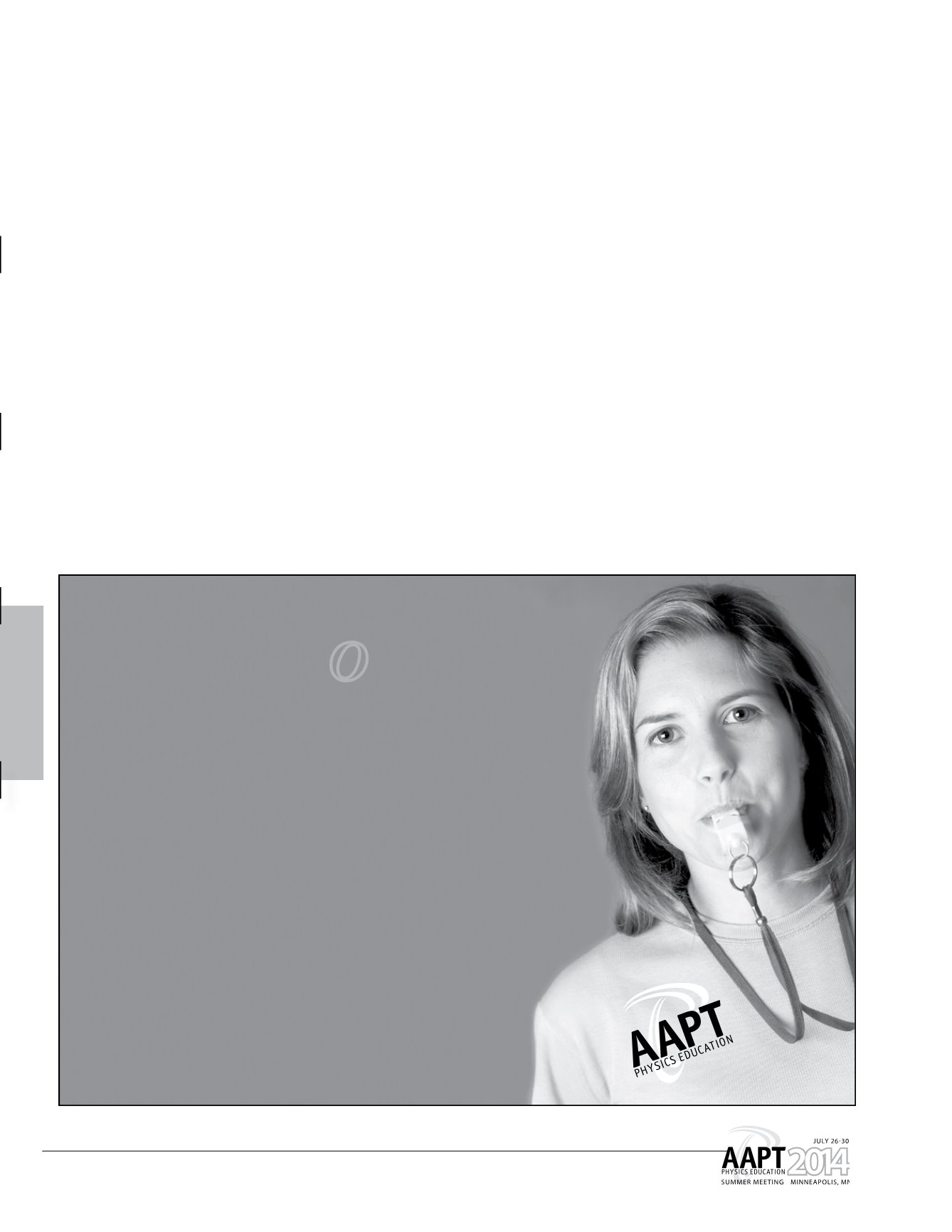
124
Tuesday afternoon
questions, and various other activities. One of these two courses, PHGN
440, is a senior-level elective on solid state physics. The other, PHGN 462,
is a core course on electrodynamics. In this poster we’ll report on methods,
motivations, and data, including but not limited to Youtube analytics, a
qualitative survey, course evaluations, and a PER-based content inventory.
PST2F07: 5-5:45 p.m. Core Graduate Courses: A Missed
Learning Opportunity?
Poster – Alexandru Maries, University of Pittsburgh, 5813 Bartlett, Pittsburgh,
PA 15217;
Chandralekha Singh, University of Pittsburgh
An important goal of graduate physics core courses is to help students
develop expertise in problem solving and improve their reasoning and
meta-cognitive skills. We explore the conceptual difficulties of phys-
ics graduate students by administering conceptual problems on topics
covered in undergraduate physics courses before and after instruction in
related first year core graduate courses. Here, we focus on physics graduate
students’ difficulties manifested by their performance on two qualitative
problems involving diagrammatic representation of vector fields. Some
graduate students had great difficulty in recognizing whether the diagrams
of the vector fields had divergence and/or curl but they had no difficulty
computing the divergence and curl of the vector fields mathematically. We
also conducted individual discussions with various faculty members who
regularly teach first-year graduate physics core courses about the goals of
these courses and the performance of graduate students on the conceptual
problems after related instruction in core courses.
*Work supported by the National Science Foundation
Electrostatics Diagnostic (CUE), provide rich, fine-grained information
about students’ reasoning. However, because of the difficulties inherent
in scoring these assessments, the majority of the large-scale conceptual
assessments in physics are multiple-choice. To increase the scalability and
usability of the CUE, we set out to create a new version of the assessment
that preserves the insights afforded by a free-response format while ex-
ploiting the logistical advantages of a multiple-choice assessment. We used
our extensive database of responses to the free-response CUE to construct
distractors for a new version where students can select multiple responses
and receive partial credit based on the accuracy and consistency of their
selections. Here, we offer examples of the questions and scoring of this new
coupled multiple-response CUE. We also present a direct comparison of
test statistics for both versions and potential insights into student reason-
ing from the new version.
PST2F06: 5:45-6:30 p.m. Flipped Upper-Division Physics at the
Colorado School of Mines
Poster – Patrick B. Kohl, 1523 Illinois St., Golden, CO 80401; patkohlcsm@
gmail.com
Eric S. Toberer, Colorado School of Mines
The flipped classroom is gaining popularity as a way of blending the best
of online and in-person education, but efforts so far have been mostly
(though not exclusively) focused on introductory classes. At CSM, we have
developed and implemented two upper-division physics courses that use
full or partial flips. Students are asked to watch one or more videos before
class as preparation, with the actual class period occupied by Q&A, clicker
To register and learn more visit us at
Here’s how it works:
Your students take a 40-question,
45-minute, multiple-choice test in March 2015 under
your school’s supervision. Exam questions are based
on topics and concepts covered in a typical high
school physics course. Winners will be announced
and awarded prizes the first week of May.
American Association of Physics Teachers
PHYSICSB
O
WL 2015
Enter your outstanding students in
PHYSICSB
O
WL 2015
and receive
recognition for your students, your
school, and your teaching excellence.


